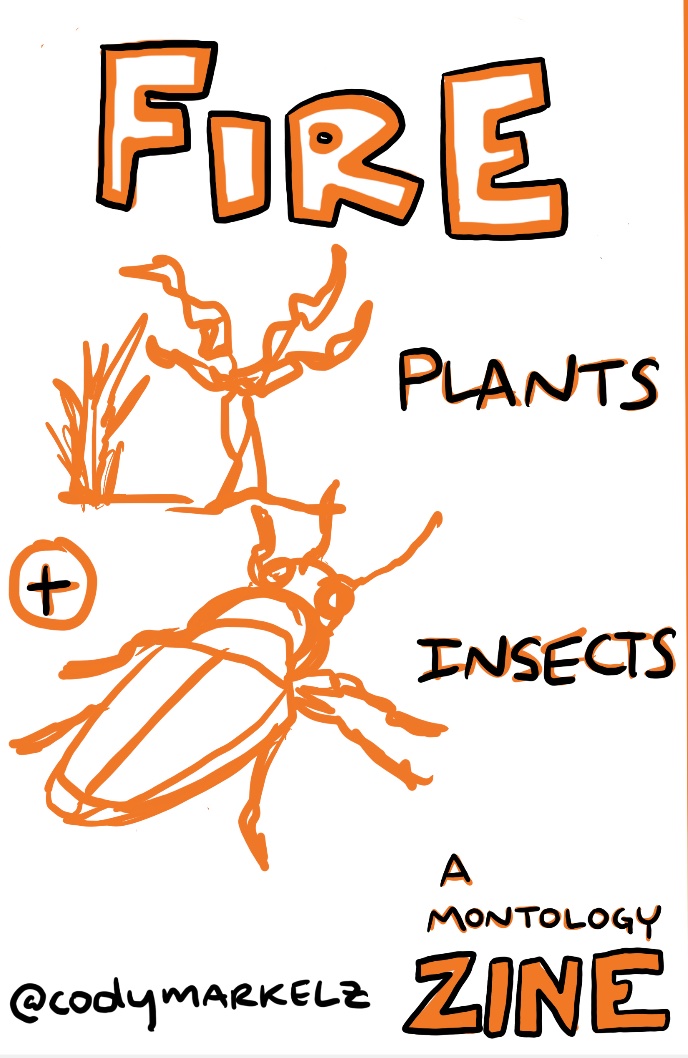
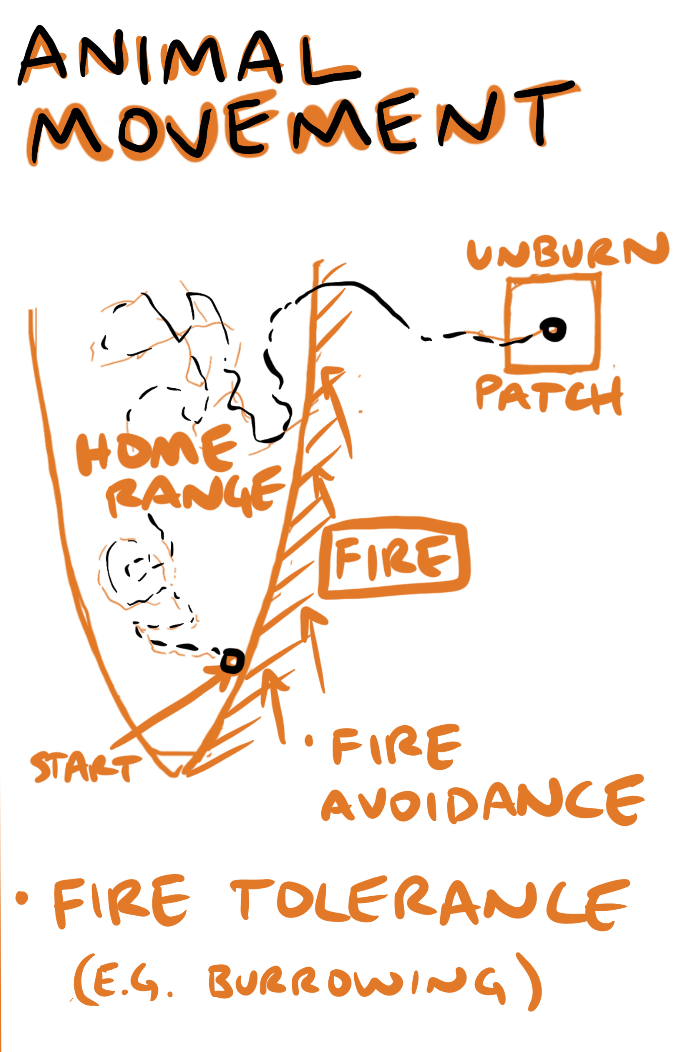
Animals that can move faster than a fire can move out of the burn zone and reestablish next to it.
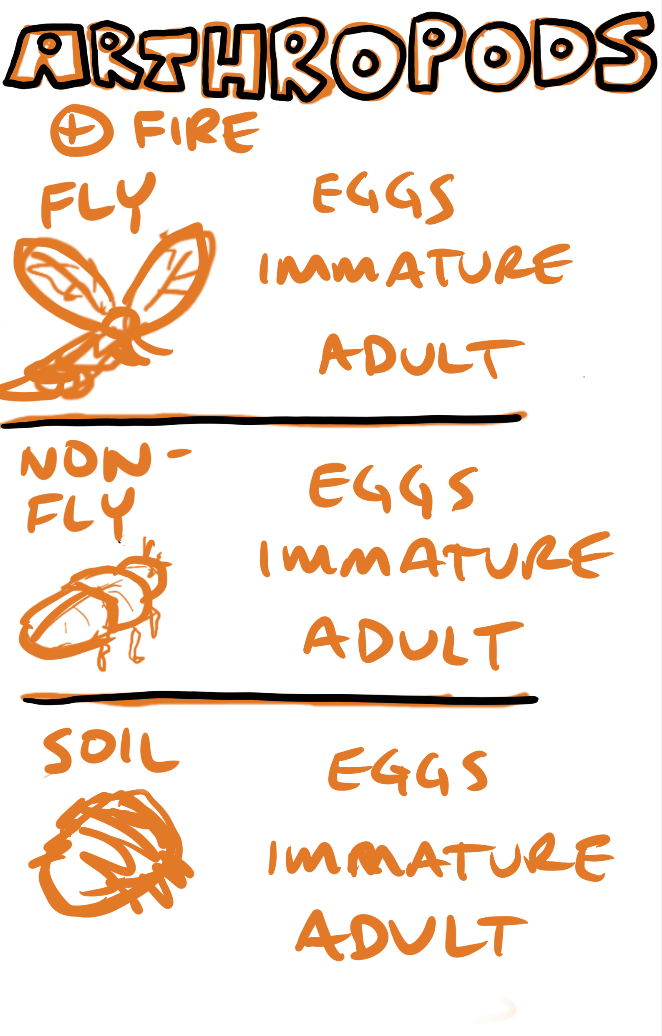
Fire impacts arthropods differently depending on where they live and what part of their life cycle they are in at the time of the fire. If they are adults that can fly they can move versus being in a larval or juvenile stage where they might die in the fire.
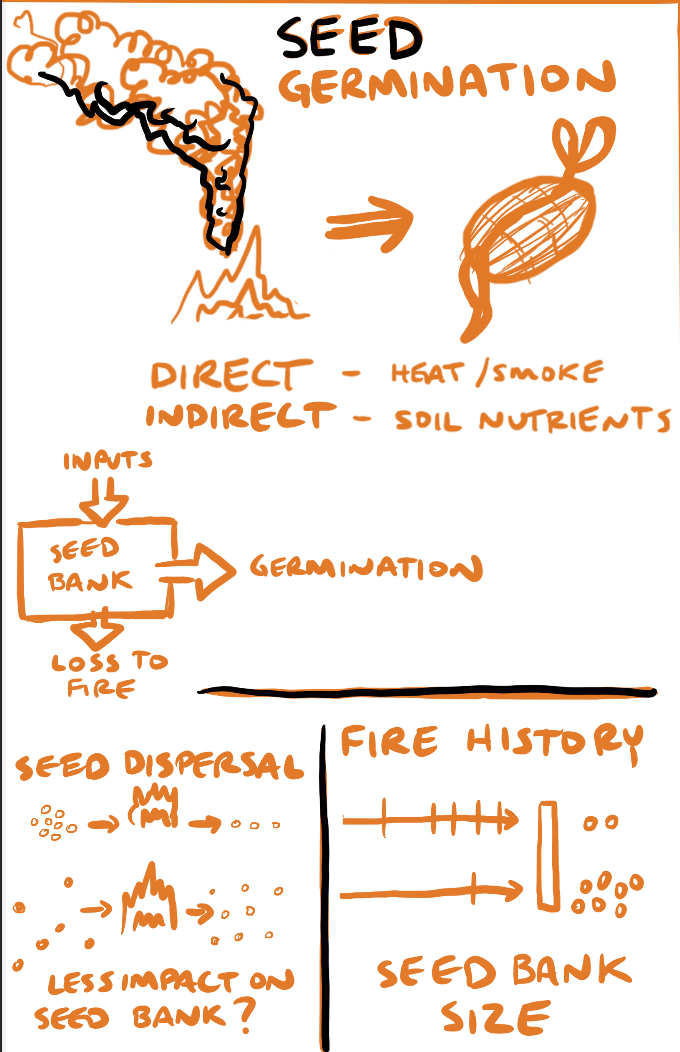
Variables contributing to seeds germinating post fire. The seed bank can vary in size depending on the fire history of an area. Each fire wipes out some of the seed bank and more frequent fires can completely wipe out the seed bank.
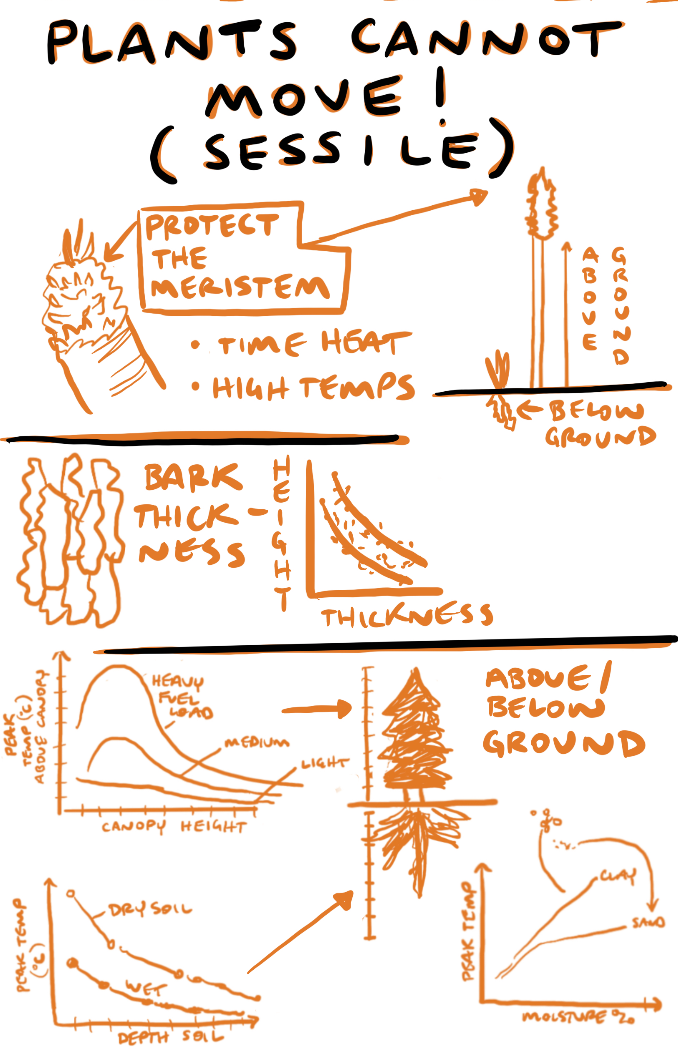
Plants are sessile meaning they cannot move and must tolerate environmental variables. In general fire adapted plants protect the meristems by growing above ground fires or by having the meristems away from the more combustible parts (i.e. closer to the ground or underground). Fire adapted trees also protect themselves with thicker bark much closer to the ground that can burn, but not catch the rest of the tree on fire.
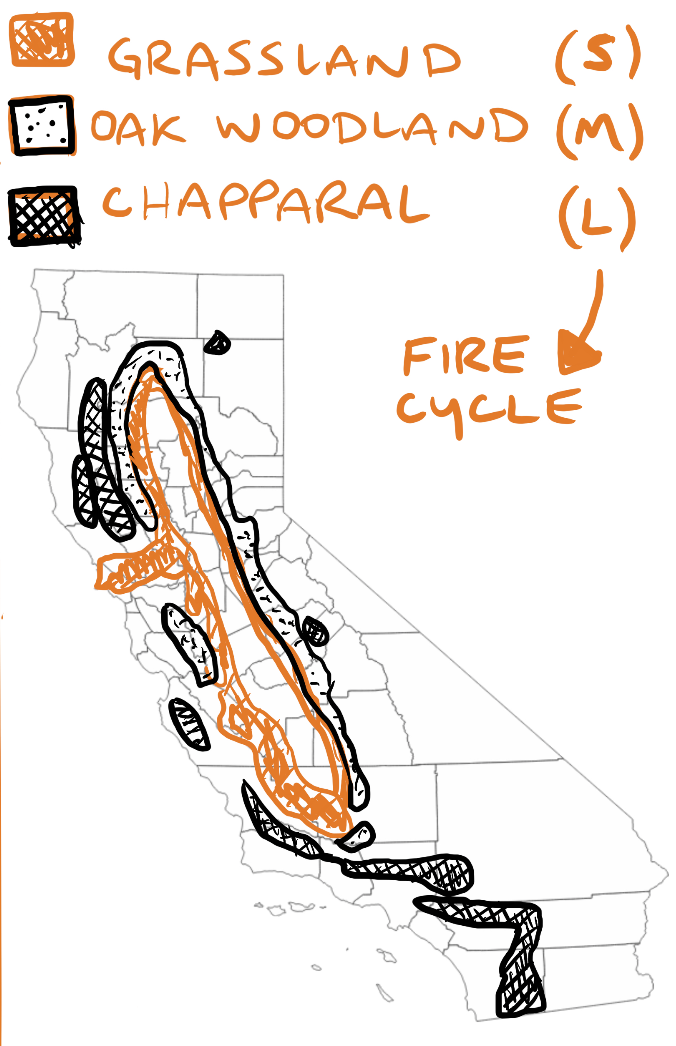
Major fire ecosystems across California that border human population density include grasslands, oak-woodlands, and chaparral. These are widely distributed across the state. In general, grasslands have short (S) fire cycles, oak-woodlands have medium (M) fire cycles and chaparral have (L) fire cycles.
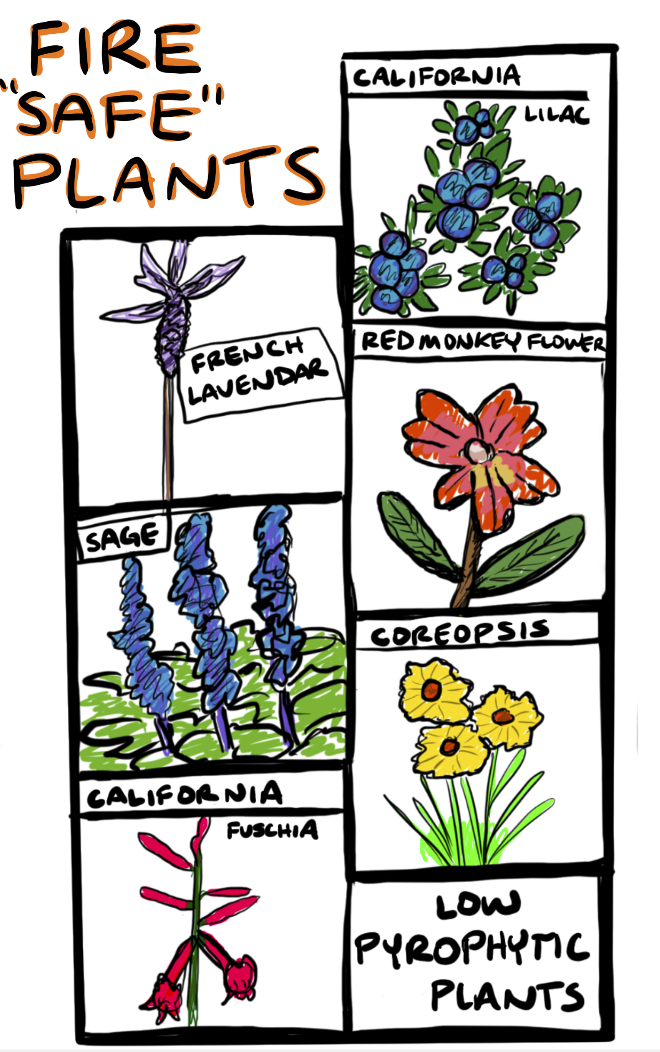
A few drought tolerant and “fire safe” plants that you can plant in most areas away from your house.
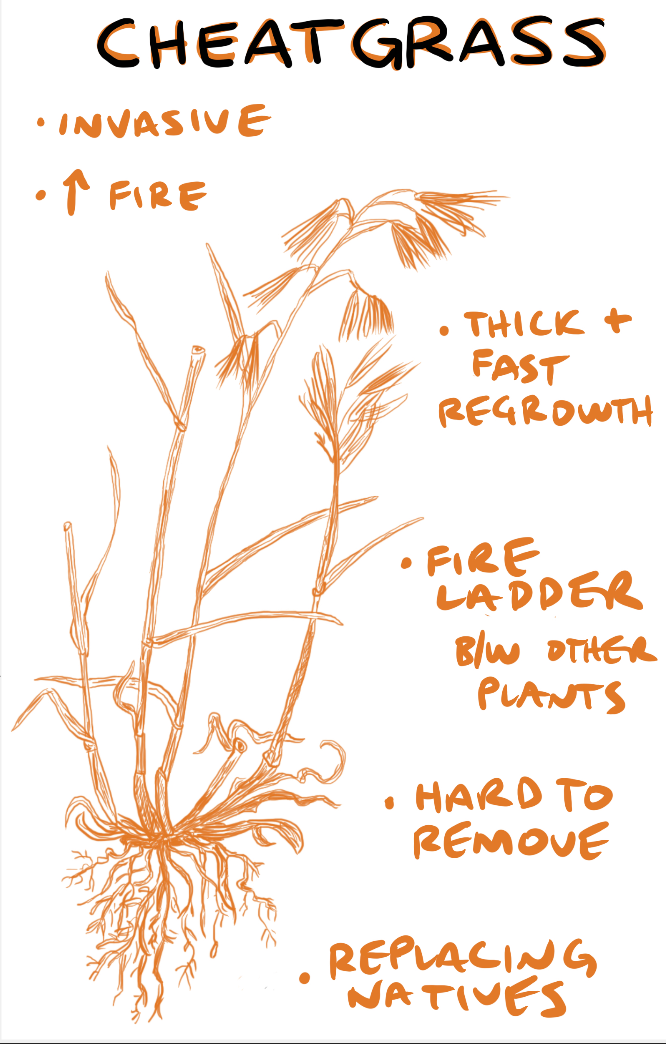
Cheatgrass is an invasive grass contributing to more frequent fires in some ecosystems where it has established itself. It grows in dense clusters that out compete the native vegetation and creates fire bridges between vegetation that do not occur naturally (i.e. in sparse sagebrush ecosystems).